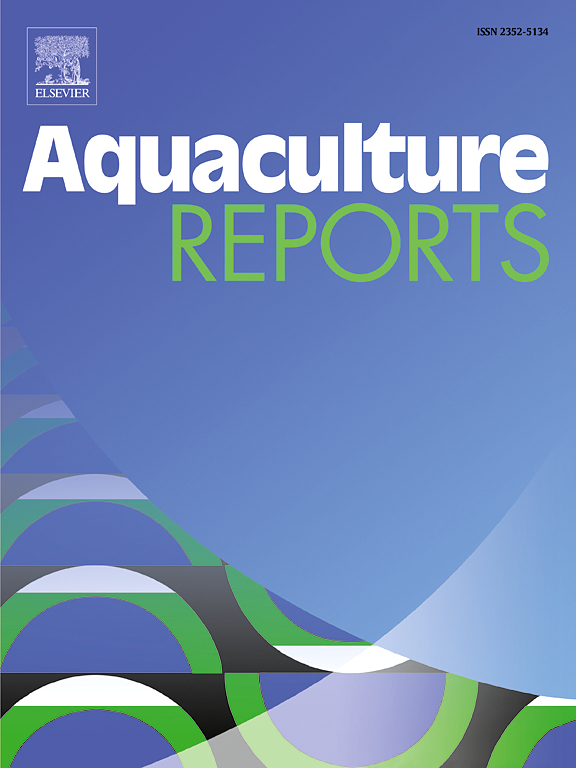Resveratrol mitigates the negative effects of feeding high-lipid diets to hybrid grouper (♀ Epinephelus fuscoguttatus × ♂ E. lanceolatus)
IF 3.2
2区 农林科学
Q1 FISHERIES
引用次数: 0
Abstract
The objective of this experiment was to ascertain whether dietary supplementation with resveratrol (RES) could mitigate the negative effects of the high-lipid diet on hybrid grouper (♀ Epinephelus fuscoguttatus × ♂ E. lanceolatus). Four isonitrogenous (43 %) and isolipid (16 %) diets with 0 mg/kg, 100 mg/kg, 425 mg/kg and 1800 mg/kg RES were formulated respectively, which named R0, R1, R2 and R3, and administered to the grouper for a 42-day period. The results showed that hepatic somatic index (HSI) and whole-body crude lipid were significantly lower in the RES-treated groups, and visceral somatic index (VSI) was significantly lower in the R3 group than those in the control group (P < 0.05). The addition of RES decreased serum levels of total cholesterol (TC) and low-density lipoprotein (LDL), and increased levels of triglyceride (TG) and high-density lipoprotein (HDL). Addition of moderate amounts of RES reduced hepatic TC, TG and very low-density lipoprotein (VLDL) content as well as fatty acid synthase (FAS) and acetyl coenzyme A carboxylase (ACC) activities, and increased lipoprotein lipase (LPL) and hepatic lipase (HL) activities. The number and area of hepatic lipid droplets were found to be significantly reduced in the RES-treated groups in comparison to the control group. RES significantly up-regulated the expression of peroxisome proliferator-activated receptor α (pparα) and lipoprotein lipase (lpl), and down-regulated the expression of peroxisome proliferator-activated receptor γ (pparγ) and fatty acid synthase (fas) (P < 0.05). These results suggest that in high-lipid diets, feed RES improves lipid metabolism in grouper mainly through activation of lipolysis and inhibition of lipid synthesis. Under the conditions of this experiment, based on the analysis of the polynomial fitted curves for WGR and serum HDL content, it is recommended that 800–1000 mg/kg of RES be added to the high-lipid diet of juvenile hybrid grouper to improve lipid metabolism.
求助全文
约1分钟内获得全文
求助全文
来源期刊

Aquaculture Reports
Agricultural and Biological Sciences-Animal Science and Zoology
CiteScore
5.90
自引率
8.10%
发文量
469
审稿时长
77 days
期刊介绍:
Aquaculture Reports will publish original research papers and reviews documenting outstanding science with a regional context and focus, answering the need for high quality information on novel species, systems and regions in emerging areas of aquaculture research and development, such as integrated multi-trophic aquaculture, urban aquaculture, ornamental, unfed aquaculture, offshore aquaculture and others. Papers having industry research as priority and encompassing product development research or current industry practice are encouraged.
 求助内容:
求助内容: 应助结果提醒方式:
应助结果提醒方式:


